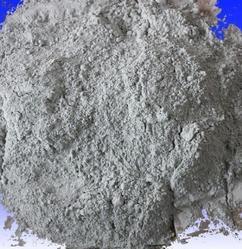A concrete mix necessarily contents cement, water, fine aggregate and coarse aggregate. Aggregate occupy about 60 – 70% volume of concrete. In this percentage 40 to 50 % proportion of aggregate is fine aggregate (sand). Fine aggregate selection plays vital role in concrete performance and its cost.
Lately the need for replacing sand with alternative materials have picked governing serious environmental impact of dredging sand from river bed, also there is huge demand and supply gap in major cities.
Understanding Aggregate Role in Concrete Mix Proportioning
Aggregate is a granular material, such as sand, gravel, crushed stone used with a cement to produce either concrete or mortar.
Aggregate is relatively inexpensive and does not enter into complex chemical reactions with water; it has been customary, therefore, to treat it as inert filler in concrete and mortar.
Aggregates are basically inert materials, basic functions are
- Economical fillers
- Provide volume stability
- Reduce volume changes
- Provide abrasion resistance
Fine aggregate is termed used for particles smaller than 4.75mm, contains particles in the size range 75 µm to 4.75 mm.
As per BIS fine aggregate is divided in four Zones as per their grading ,Zone – II are fine aggregates are best for concrete ,Zone- I & III can also be used, Zone – IV is to fine can’t be used for concrete application(will lead to stickiness in concrete).
In total aggregate, the proportion of sand to coarse aggregate (C.A) is altered depending on fineness of sand. Fineness modulus (F.M) measures the degree of fineness of a fine aggregate, lower value of F.M indicates finer particles.
Fineness modulus of fine aggregate is calculated by sieving fine aggregate on standard sieve sizes starting from 4.75 mm to 150 microns, it is derived by summation of cumulative percentage retained on each sieve divided by 100 giving the value of F.M of fine aggregate.
F.M of Ideal fine aggregate for concrete applications are in range of 2.6 to 2.9.
Fine sand (lower F.M Value ) reduces the sand requirement % in the total aggregate proportion. On the other hand, coarser sand will require higher sand % in the total aggregate proportion to give a cohesive concrete mix consuming least cement.
Any material which are basically chemically inert and having particle size falling in BIS Zoning criteria, would be ideal replacement to river sand(partially or fully) in concrete mixes.
Materials that can Replace Sand Fully Or Partially in a Concrete Mix
1. Crushed Sand (Manufactured Sand)
Crushed sand (Manufactured sand) is produced by crushing rock (as in the case of coarse aggregate) to give particle size and grading at par with river sand, the texture may differ using Vertical Shaft Impactor Machines.
The percentage passing 150 microns of manufactured sand is relaxed to 20% (while that of natural sand is limited to 10%). As per design and economics, crushed sand can be used to partially or fully replace river sand from a concrete mix.
The Availability of crushed sand is not a concern as it can be manufactured from rocks in any season.

2. Crushed Dust or Quarry Dust
Crusher dust (quarry waste) is by product of stone crushers while producing coarse aggregate. Instead of disposing them in landfills, it can be best utilized as partial replacement to sand.
In crusher dust, the particles (% finer than 150 microns) are generally high, a major concern limiting its percentage replacement to minimum with sand in a concrete mix. It can be replaced to the amount 25%. Its Availability is not a concern.

3. Washed Bottom Ash
Bottom ashes are waste of coal fired thermal power plant generally disposed in landfills. Post washing (basically done to remove carbon, unwanted in concrete), it can be used for replacing sand to the amount of 35% in a concrete mix. Its Availability is limited, restricted to power plant area.
4. Granulated Blast Furnace Slag
Granulated blast furnace slag is a waste of steel industry; its use can be best exploited as part replacement of sand in concrete. It can replace sand to the amount of 70 % in concrete mixes. Its Availability is limited, restricted to steel plant area. As Granulated blast furnace slag has high glass content with sharp particles, precautions while handling it and in concrete have to be ensured.

5. Construction Demolition Waste
Construction demolition wastes (crushed and sieved) are basically dead mortar and concrete separated from steel, which when crushed and sieved, can replace sand to the amount of 25% in concrete mixes.







